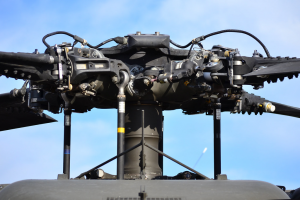DUBLIN, Ireland, Sept. 27, 2023 (GLOBE NEWSWIRE) — The use of AI in aviation goes beyond customer support chatbots and price comparison tools for travelers. While these applications will definitely stay and become ubiquitous, the real disruption will come from optimizing the “hard” areas of aviation – from revenue management to evaluating the likelihood of a strike. Chairman of Avia Solutions Group Gediminas Ziemelis shares his predictions regarding the areas where AI in aviation will make a massive difference.
- Unlocking true dynamic pricing. In the airline business, revenue management has never been an easy game, but the stakes are even higher in the post-COVID world. According to IATA, the average profit margin per passenger today is truly razor-thin – just $2.25, compared to double-digit numbers in 2019. AI can help improve the tough task of analyzing historical data and calculating the right price, taking into account the client’s location and a myriad of other factors. While larger airlines will probably opt for building their own solutions in-house, there’s already a growing number of carriers partnering with the likes of AirGain – an AI-driven predictive solution with a data lake covering 6 billion price points.
- Maintaining engine health. Predictive maintenance has been an integral part of MRO for quite some time now, with sensors helping airlines determine when and what needs to be fixed or replaced. Artificial Intelligence can use both real-time sensor data and predictive historical fault patterns to reduce downtime and overall costs of maintenance. A recent study conducted by the University of Maryland’s Center for Advanced Aviation System Development (CAASD) found that predictive maintenance can reduce aircraft operational costs by up to 20%. AI is already disrupting this field. For instance, Lufthansa Technik has leveled up aircraft upkeep with its AI-driven predictive maintenance systems. Their Condition Analytics solution employs machine learning algorithms to analyze sensor data from various aircraft components, predicting maintenance needs with remarkable precision. The creation of so-called “digital twins” – perfect virtual replicas that change their parameters according to the physical component’s wear – MRO technicians use digital twins for predictive maintenance and to detect anomalies by comparing real-world sensor data to the data generated by digital twins.
- Planning the most efficient route. According to IATA, airlines will spend $215 billion this year, accounting for around 28% of operating expenses, which can be reduced with more efficient route planning. Numerous variables (including air traffic congestion, quickly changing weather patterns, and fluctuating fuel costs) make route planning a complex and demanding task, which can either improve or damage a carrier’s bottom line, depending on how efficiently it is performed. AI-enabled platforms can accelerate decision-making for operators, helping them harness not just the power of historical data but also of predictive mechanisms that, together, generate an actionable and clear picture. One example of such a platform is Flyways, which uses scheduled and active flight data to map out flight routes that go through less-congested areas and bypass areas with adverse weather conditions. The solution has already been tested out by Alaska Airlines, saving the company 480,000 gallons of fuel and resulting in 4,600 fewer tons in carbon emissions over a six-month period. The results of such AI-operator collaboration are reflected not only in cost savings but also in helping businesses become more sustainable. Once such solutions become commonplace not just among airlines but also flight authorities around the world, we will look back at today and be surprised at how inefficient all of us were when planning routes.
- Predicting strikes. While strikes in aviation usually make headlines because of the disruption they have on travelers’ plans (especially around major holidays), the fact that airlines can lose tens if not hundreds of millions per strike is often overlooked. In 2022, for instance, SAS lost $145 million over a 15-day pilot strike. As AI can analyze not just technical but also sociological data, a model could be designed to help airlines predict a potential strike and be better prepared for potential negotiations. Models like this that can predict the probability of individual employees leaving their jobs have already been developed by IBM, producing 95% accuracy.
- Improving workflows in-flight. An AI can serve as a helper not just to the staff on the ground but also to the cabin crew. It is not just about making routine tasks easier – a properly trained tool can offer expert advice on managing the aircraft and making quick, informed decisions, especially when the pressure is on and quick decisions are vital. The wheels are already in motion to bring this vision to life, with Level 1 AI applications nearing certification, thanks to EASA’s Trustworthiness of Machine Learning based Systems guidelines established in April 2022.
- Helping pilots and crew maintain their mental health. Could an AI model have prevented the suicide-by-pilot disaster of Germanwings Flight 9525 that led to the death of 150 people? While this is an area of much speculation, specially designed regular staff screenings can help predict the likelihood of mental issues exacerbated by exposure to stressful events, such as circadian rhythm disruptions, instances of turbulence, and onboard emergencies. Another promising application, which is already being tested by the UK startup Blueskeye AI, is the use of facial sensing technology to identify fatigue in pilots. Today, fatigue is calculated based on the number of hours a pilot has flown, but in the future, this metric will be highly individualized.
- Predicting the probability of Airworthiness Directives. An Airworthiness Directive (AD) for either a part of the frame or the engine can ground a sizeable share of an airline’s fleet, especially one that is not diversified across different models. Knowing the likelihood of such a risk can massively help at different stages of fleet management – from fleet formation to maintenance. Much like AI-driven risk management software in banks and financial institutions, a similar solution could be deployed to calculate and mitigate AD risks.
- Improving in-house quality management processes. While no malfunction will ever rival the $20 billion bill that Boeing had to foot because of the crashes and subsequent grounding of the 737 MAX, a QA issue can still bankrupt a company. While quality assurance standards in aviation are already higher than in any other industry due to strict regulation of everything related to safety and security, AI can boost in-house quality assurance protocols within the realms of aviation manufacturing and airline management. At the manufacturing stage, a sophisticated computer vision system enhanced by manual checks can better pinpoint flaws in components. For airlines, an AI-enhanced Safety Management System (SMS) can take into account vast amounts of data from various sources, including performance, weather partners and maintenance information.
- Finding the best logistics solution for AOG situations. While every aircraft on ground (AOG) situation is unique, it can cost the airline anything from $10,000 to $150,000, not to mention reputational damage. Figuring out the puzzle of both finding the spare part needed and delivering it in hours, and not days, can be tricky, especially if the AOG situation happens far away from major hubs. An AI solution could help the company quickly locate and ship the part to the aircraft. At the same time, a predictive maintenance solution can help prepare for potential AOG events and make sure that there are always enough critical parts in stock.
- Determining insurance pricing. In the post-9/11 world, aviation insurance buyers globally are still encountering escalating prices and diminished availability when it comes to war risk coverage. An AI model can help airlines calculate the risks they are facing more precisely, helping them to understand their “war risk” exposure when they are making insurance-related decisions.
About Gediminas Ziemelis
Gediminas Ziemelis (born April 4, 1977) is an accomplished Lithuanian entrepreneur, business consultant, and the founder and current Chairman of the Board of Avia Solutions Group, the largest global ACMI (Aircraft, Crew, Maintenance, and Insurance) provider, operating a fleet of 196 aircraft. He was selected twice among the top 40 most talented young industry leaders by Aviation Week & Space Technology.
Gediminas is known for his cosmopolitan mindset and exceptional management skills, which have contributed to his success in various business fields. Over his 26-year-long career, Gediminas has founded more than 100 start-ups, 50% of which are still in operation, led companies through 4 successful IPO/SPO processes, and raised over 800 million euros in global public capital and bond markets.
In December 2022, Gediminas Ziemelis was listed as the richest Lithuanian by TOP Magazine, with estimated assets worth 1.68 billion euros.
Gediminas is the largest donator of Rimantas Kaukenas Support Group, a charity and support fund, that provides help to children with oncological diseases and their families. He is also the biggest shareholder in the leading basketball club Wolves.

Media contact: Silvija Jakiene Chief Communications Officer Avia Solutions Group [email protected] +370 671 22697
![]()
Originally published at https://www.einpresswire.com/article/658037174/10-areas-of-the-aerospace-industry-to-be-disrupted-by-ai-tools





